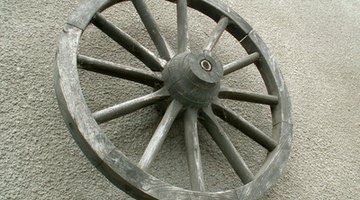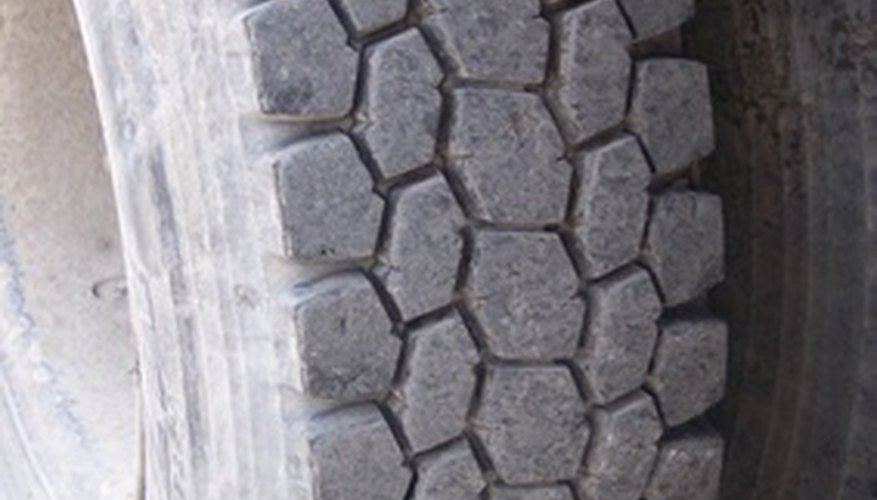Calculating the mass of air is relatively simple because, due to its chemical composition, air has an established molar mass at different conditions of volume and pressure. At standard pressure and temperature (STP), for instance, air has a molar volume of 22.4 litres (cubic decimetres) and a molar mass of 29 grams. That is, if you took 29 grams of air at STP, it would spread across 22.4 litres. This relationship can easily be used to determine the mass of any volume of air at a certain pressure.

Measure the two diameters of the tire. The diameter is a central cross-section of a circle. For the outside diameter of the tire, use your measuring tape to find the distance from end of the tire to the other. For the inside diameter, use your measuring tape to find the distance from one end of the hubcap to the other.
- Calculating the mass of air is relatively simple because, due to its chemical composition, air has an established molar mass at different conditions of volume and pressure.
- For the outside diameter of the tire, use your measuring tape to find the distance from end of the tire to the other.
Calculate the volume of the two cylinders with the standard volume equation, where volume=pi x radius squared x height. For each cylinder, you will use 3.14 as an approximate value for pi. For each radius, simply divide the diameter you measured in Step 1 by two. For the radius squared, multiply this number by itself. For each height, use the diameters you measured in Step 1. You will have two different measurements here, one based on the space of the full tire, and one based on the space of the hubcap.
- Calculate the volume of the two cylinders with the standard volume equation, where volume=pi x radius squared x height.
- For each radius, simply divide the diameter you measured in Step 1 by two.
Calculate the volume of the area filled with air. With the two measurements found in Step 2, find the difference in volumes. Subtract the volume of the smaller cylinder from the volume of the larger cylinder to determine the exact volume of the space in the tire that is actually filled with air.
Determine the pressure of the tire with a gauge. For estimates, a well-inflated tire has about 30 PSI, or pounds per square inch of pressure, or twice STP conditions. Therefore, if at standard temperature and pressure, 29 grams of air take up 22.4 litres (about 1.3 grams/litre), at 30 PSI the rate is double or 2.6 grams/litre.
- Determine the pressure of the tire with a gauge.
- For estimates, a well-inflated tire has about 30 PSI, or pounds per square inch of pressure, or twice STP conditions.
Calculate mass. Where mass=volume x density, multiply the volume (found in Step 3 of Section 1) by the density (found in Step 1 of Section 2).
Check your work against an example. For example, assuming 30 PSI tire pressure and a density of 2.6 grams per litre and a standard tire volume of ten litres, the total mass of air would be 26 grams (2.6 grams/litre x 10 litres = 26 grams). The mass of air should be relatively low unless the pressure is extremely high.
TIP
Remember that at STP, air weighs essentially nothing due to its buoyancy. Expect low numbers for air mass even if tire pressure is well above STP. For exact measurements, you can easily convert PSI into metric (grams per litre) with a conversion table in order to use chemical masses expressed in the metric system.
WARNING
Remember that only the outer portion of the cylinder former by the tire is filled with air. You should remember to subtract the inner volume of the cylinder formed by the spokes.
